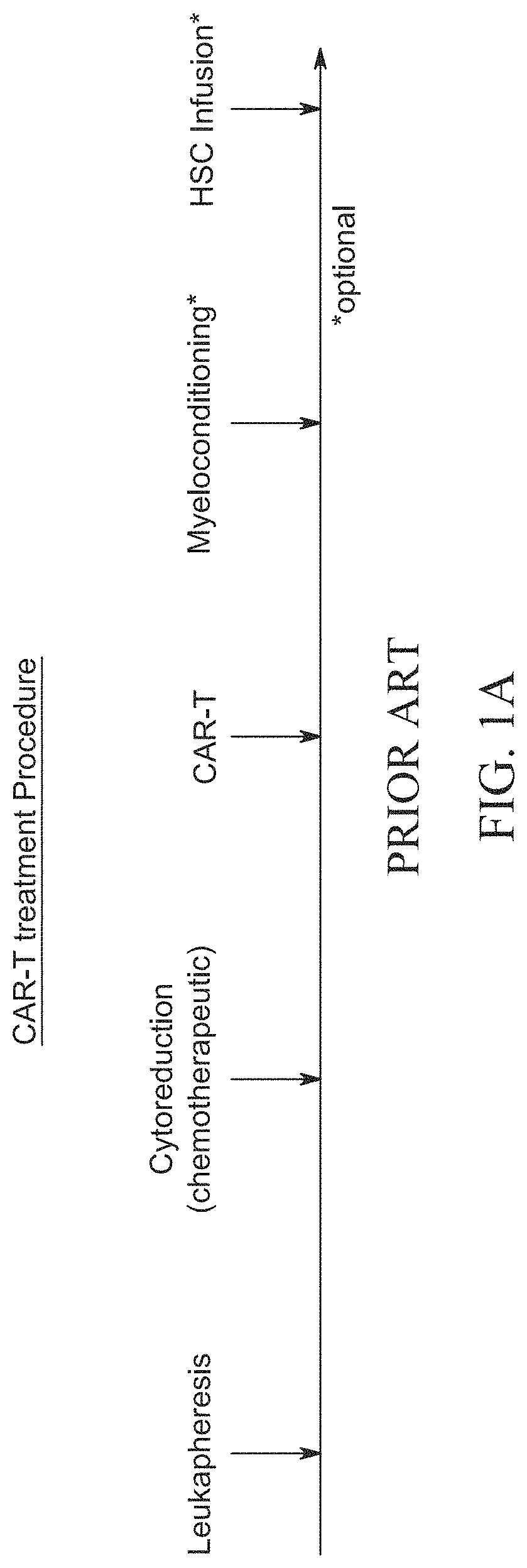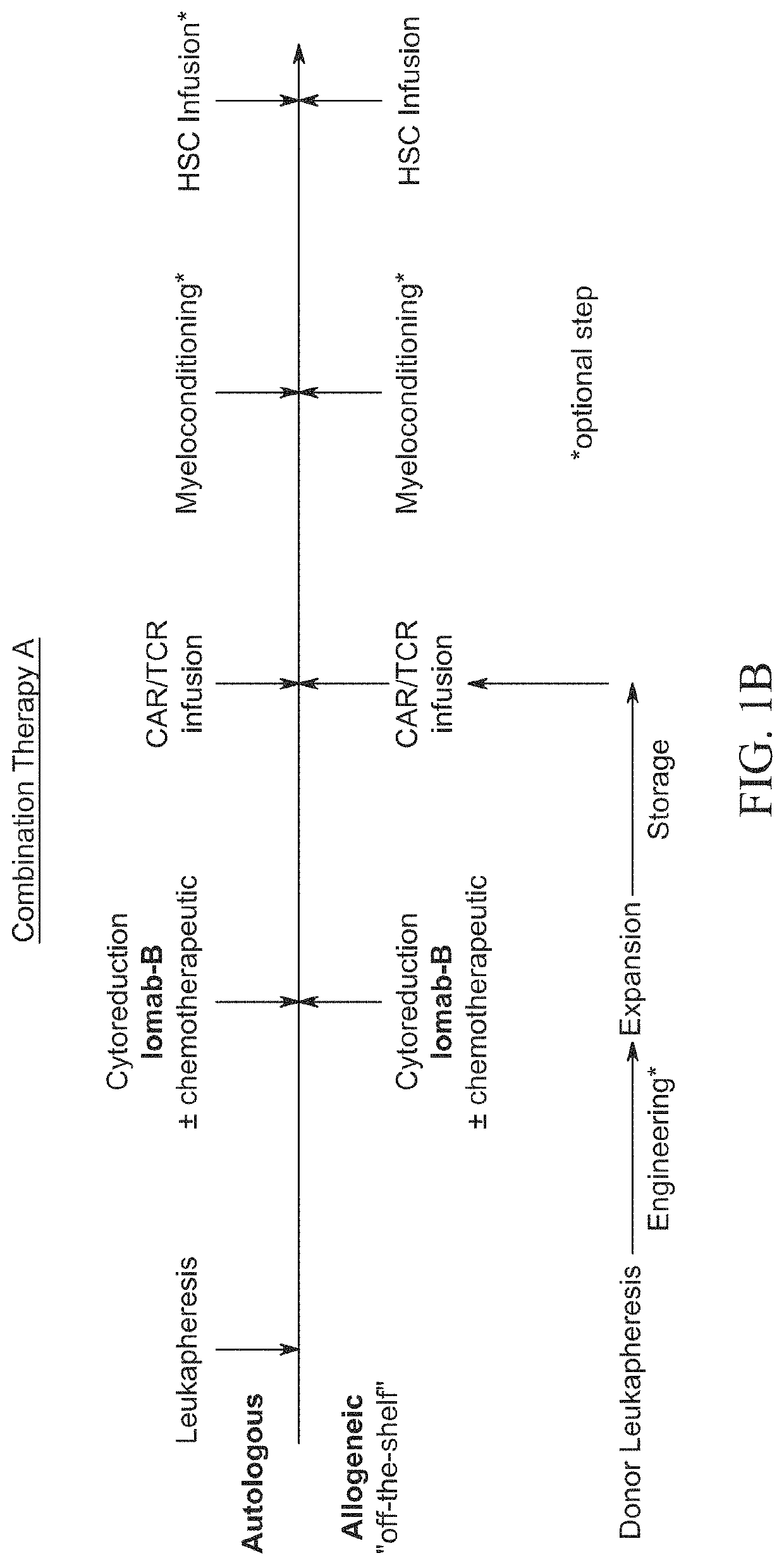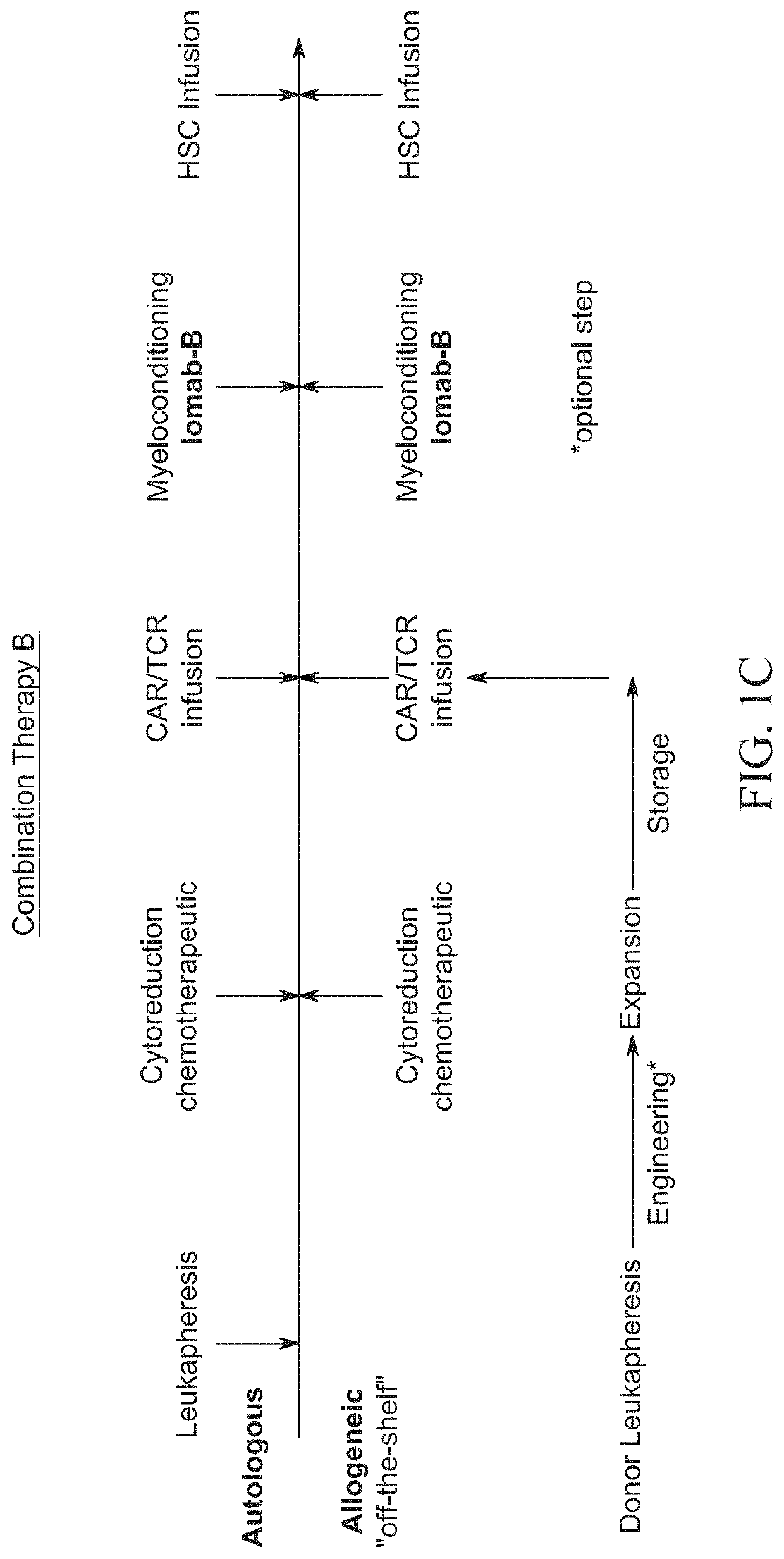Compositions and methods of immunodepletion for the treatment of malignant and non-malignant hematological diseases
a technology of immunodepletion and malignant hematological diseases, which is applied in the direction of immunodeficiency disorder, drug composition, peptide, etc., can solve the problems of not all patients can tolerate, not only deplete the immune system in a non-targeted manner, and damage to other normal cells and tissues. , to achieve the effect of improving treatment outcomes and lessening side effects
- Summary
- Abstract
- Description
- Claims
- Application Information
AI Technical Summary
Benefits of technology
Problems solved by technology
Method used
Image
Examples
example 3
Absolute Neutrophil Count
[0159]CD45 is a cell surface protein expressed on most immune cell types, including both lymphocytes and neutrophils. Iomab-B (131I-BC8) radioimmunotherapy targets and delivers its beta-emitting payload to CD45-positive cells. It would have been expected that all CD45-positive cell types would be equally susceptible to depletion following dosing with 131I-BC8. Data from human clinical trials, shown in FIG. 2, shows the relative absolute neutrophil counts for human subjects at various time points following a 10 mCi dose of 131I-BC8, presented as fold-increase or decrease. While absolute lymphocyte counts were significantly reduced and exhibited sustained depletion over time, median absolute neutrophil counts exhibited a minimal decrease following 131I-BC8 dosing, with rapid recovery. This is a surprising finding. The limited impact of 131I-BC8 on neutrophils and their rapid rebound would be expected to benefit patients by preventing infections that might otherwi
example 4
Data Demonstrating Lymphodepletion and Clearance
[0160]Clinical data obtained from patients given low dose levels of 131I-BC8 show consistent peripheral lymphocyte reduction. Pharmacokinetic data show fast clearance of 131I-BC8. This clearance limits interaction with CAR T products. Increased disease control and prolonged lymphodepletion allow for a flexible window of time between 131I-BC8 administration and CAR T infusion, which in turn prevents toxicity. For example, as shown in FIGS. 3A-3H, immune cell analysis following 131I-anti-CD45 antibody targeted lymphodepletion shows a selective depletion of WBC (FIG. 3A) in peripheral blood and splenic immune cell populations (FIG. 3B), with minimal impact on bone marrow compartment (FIG. 3C) and sparing of RBCs and platelets (FIGS. 3D and 3E, respectively). FIGS. 3F-3H provide bar graphs of similar trial results at days 2 and 4 only. Somewhat surprisingly, the splenic T-reg levels were found to be persistently depressed (depleted) even afte
example 5
AR-T Cell Therapies in Development, and their Lymphodepletion Regimens
[0161]There are numerous CAR-T cell therapies in development, each with its own lymphodepletion regime. The chart in FIG. 6 shows selected published trials of anti-CD19 CAR T-cell therapy for patients with B-cell NHL. Most of these trials employ a chemotherapeutic lymphodepletion regime.
Example 6—131I-BC8-Based Lymphodepletion Prior To KYMRIAH®
[0162]In this example, the subject invention is used to treat a human subject afflicted with NHL or DLBCL. In the first case, this method comprises (i) administering to an NHL patient from 25 mCi to 200 mCi (e.g., 100 mCi or 150 mCi) of 131I-BC8, and (ii) after 6, 7 or 8 days, performing KYMRIAH® (tisagenlecleucel) therapy on the patient according to its known protocol. In the second case, this method comprises (i) administering to a DLBCL patient from 25 mCi to 200 mCi (e.g., 100 mCi or 150 mCi) of 131I-BC8, and (ii) after 6, 7 or 8 days, performing KYMRIAH® therapy on the pat
PUM
| Property | Measurement | Unit |
|---|---|---|
| Fraction | aaaaa | aaaaa |
| Fraction | aaaaa | aaaaa |
| Time | aaaaa | aaaaa |
Abstract
Description
Claims
Application Information
 Login to view more
Login to view more - R&D Engineer
- R&D Manager
- IP Professional
- Industry Leading Data Capabilities
- Powerful AI technology
- Patent DNA Extraction
Browse by: Latest US Patents, China's latest patents, Technical Efficacy Thesaurus, Application Domain, Technology Topic.
© 2024 PatSnap. All rights reserved.Legal|Privacy policy|Modern Slavery Act Transparency Statement|Sitemap



